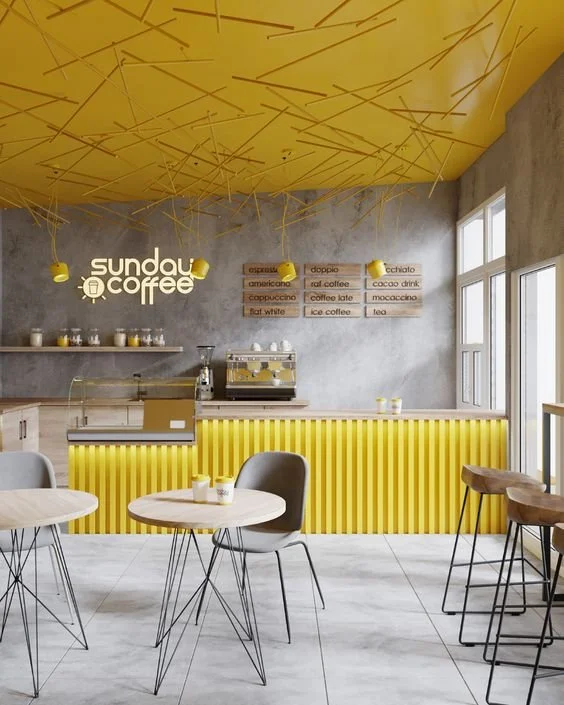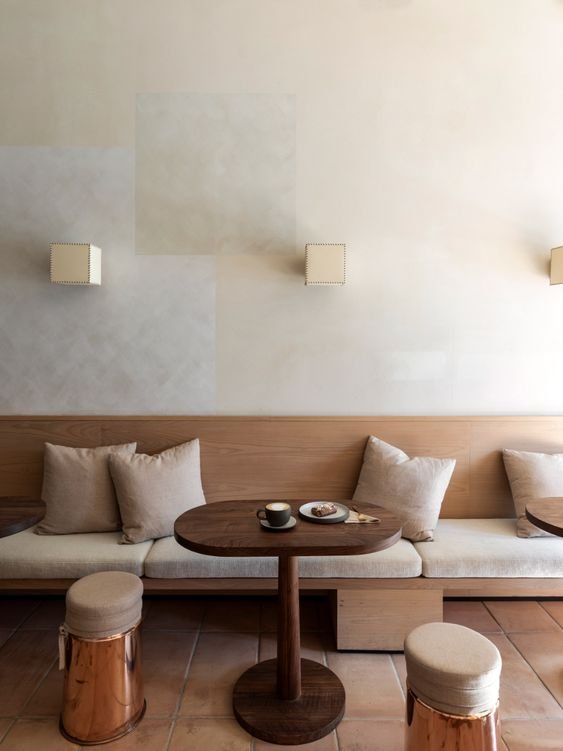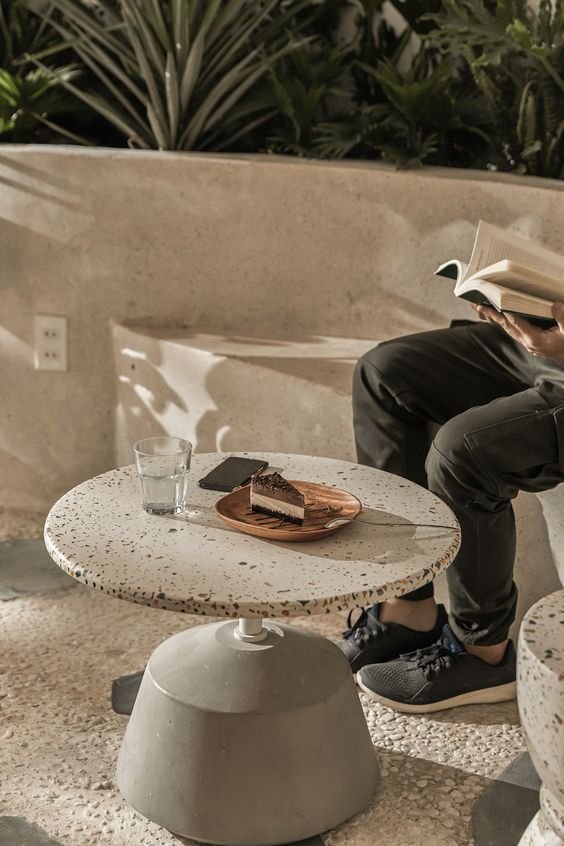Holistic Restaurant Design: Putting Customer Experience First
Any good restaurateur will know that running a restaurant business is complex, and that successful restaurants all have one thing in common: their ability to keep people and parts moving in a well-coordinated dance that always puts the guests’ needs first.
In March 2020, the COVID-19 pandemic forced the restaurant dance to adopt all new choreography. Nearly over night, restaurants had to Pivot (that dreaded word!) or face extreme financial challenges.
Luckily, guests have been happily returning to their favorite rendezvous spots to dine-in with good friends and enjoy inviting food together. While the restaurant experience has been restored, the game has certainly changed.
For restaurants that were able to stay afloat, stepping up the take-out game during the pandemic was likely a major contributing factor.
Today, a unique opportunity exists for restaurants who are willing to maintain that additional revenue stream by incorporating their once-essential take-out business into their permanent and ongoing service.
The challenge? Transforming clunky, make-shift service stations into sophisticated and integrated revenue-generators that refuse to sacrifice the guest experience, whether they’re dining in, taking out or using a food delivery service.
Here at Sansa Interiors, we know that the best solutions begin with exceptional design. And exceptional design is fundamentally holistic in its approach.
At its core, holistic design considers the psychological, physical and spiritual well-being of a space’s occupants. Whether the space is a home, business or institution, a holistic design approach promotes harmony and balance for the people who experience it.
Putting your guests first: Designing with empathy
From a restaurant’s perspective, that means tackling your design from a place of deep understanding of your guests: their desires, anticipations, pain points, dislikes, and expectations in order to deliver an experience that is harmonious.
When paired with operational efficiency, which can be codified by a thoughtful approach to layout and technology, a good design will help to ensure that every guest leaves satisfied.
So, where does a restaurateur who wants to update their space start? We say it should be with defining your guests’ expectations, which also means honing in on your ideal clientele and establishing a space that will give them exactly what they want.
Once you know who you’re trying to attract, you can begin to make meaningful design decisions about how your restaurant will function, and how you will communicate that function to your guests.
Designing the story you want your restaurant to tell
This clear communication begins with your restaurant’s branding. Guests will always feel the most comfortable when they know exactly what to expect. Good design will make that clear from the moment they walk in.
The brand story of your restaurant will tell your guests if they can expect a high-end dine-in experience with white-glove service or casual quick service take-out or anything in between. It will also tell them where they need to go, what they need to do when they get there, and how to easily move through the space.
Let’s take a fine dining restaurant for example: If you’re looking to give your guests an intimate dine-in experience, start with mapping out their journey from the moment they arrive. They walk in and are immediately greeted with a welcoming front-of-house host who will take them to their seat. Tables are nestled in intimate corners or divided by privacy screens that dampen the sound within the restaurant. Service is polished and friendly, and, thanks to an expert and efficient back-of-house, the food is exceptional. Perfection.
When each aspect of your guests’ experience is thoughtfully considered, your restaurant will (should!) work in harmony.
The same goes for take-out establishments: By focusing design choices on areas that will keep guests moving efficiently through your space, you’ll be making good on your promise of quick service and yummy food. Again, taking a holistic approach for your customers and hopefully enticing them to keep coming back.
Once you’ve clearly established how you want your restaurant to run, it’s time to marry that guest experience with your interior design palette.
It’s no secret that the aesthetic choices you make for your restaurant are paramount to reinforcing the guest experience you are hoping to foster. Whether it’s plush and luxurious, bright and playful, or anything in between, your material and colour palette will have the biggest impact on how your guests understand your restaurant’s atmosphere.
Tapping into trends: Understanding the impact of our collective experiences
As with every aspect of design and business, trends are constantly changing. Keeping up with this evolution is one of the most important aspects of our work as interior designers: to recognize how people understand and experience the designs we put out into the world.
In restaurant design perhaps most prominently, the pandemic has had enormous influence on the direction that interior design trends are moving.
Over the last three years, our collective attention has been largely focused on keeping each other healthy and safe. We’ve been told to keep our distance, sanitize and maintain cleanliness. So, it’s no surprise that we’re now seeing the rejection of heavily textured, rugged and “grunge” aesthetics in favour of more polished finishes, cleaner lines and more sanitized surfaces. Most notably (and exciting, from our perspective!), has been the rise in the use of biophilic design principles.
Incorporating greenery and natural design elements into any design inherently exudes health and wellness. We know this from decades of research not only into interior design and how people respond to space, but through multi-disciplinary research into human nature and behaviours, psychology, mental health, and more.
Our awareness of current trends goes beyond a year’s most popular colours or the hottest new materials. We dig deeper so that we can capture an understanding of the collective state of mind of the public and therefore create designs that respond appropriately to people’s conscious and unconscious expectations.
In restaurants, for example: cleaner, brighter surfaces are more likely to evoke a sense of cleanliness, sterility and, in today’s world, safety – an important consideration as guests return to dining-in after a long time away.
We can use the same principles of conscious and unconscious expectations to develop an effective restaurant layout that once again reinforces how your guests understand your space – regardless of your type of service.
Function over form: Efficiency for a better guest experience
In our opinion, one of the biggest areas of opportunity for restaurants post-pandemic is to reimagine how the layout and flow of their space can work to better serve their take-out revenue streams.
If the pandemic has increased your restaurant’s take-out business, then it’s time to move away from those awkward, make-shift stations and commit to creating a welcoming and holistic experience for every guest you serve.
This can once again be done by understanding your guests’ experience from arrival to departure – this time from a take-out perspective.
Consider how your kitchen will manage the flow of orders from order to expedition. How do your stations work together, and is there opportunity for automation or to reimagine how you staff both the back and front-of-house? How are take-out vs dine-in orders delivered to their respective guests?
Working with a skilled interior designer who understands the inner workings of a restaurant is a great way to maximize the use and efficiency of your restaurant’s dining room and kitchen.
And, if you’re considering permanently continuing to offer a high-volume of take-out from your restaurant, consider how these two business streams will work together – or compete – for kitchen and front-of-house resources.
We took a thoughtful approach to all these questions in our recently completed Chef on Call project. An important aspect of this project’s success was our team’s understanding of how a quick service restaurant design needs to compliment the flow of the store. In this design, we made sure guests have a clear understanding of where they’re supposed to go and what they’re supposed to do, reinforcing a positive experience for every customer.
We also dedicated a specific work area for receiving and expediting take-out orders. We installed a take-out tech hub to connect to each delivery app that the restaurant services and divided the delivery/take-out pick-ups lines from the in-house guests.
We paid as much attention here to the take-out experience as we did to the dine-in guest experience, tackling both through the lens of empathy for the customer and efficiency for the restaurant.
Final thoughts: The importance of a holistic approach
As restaurant owners continue to navigate the industry post-pandemic, we’ll always recommend taking a step back from the finishes and details to think about your guests’ expectations and experiences first.
By taking a holistic approach – considering their psychological and physical experiences of the space – you’ll end up with a design that’s exciting, effective, and never falls short of expectations.
Article by Jude Kamal, Founder & Registered Interior Designer of Sansa Interiors.
Looking for an Interior Designer in Toronto?
Are you looking to turn your restaurant or cafe into a harmonious, inviting and nature-inspired locale? We can help! Our team serves Toronto, Etobicoke, Mississauga, and the rest of the Greater Toronto Area. Contact us via our website to find out more about how interior design can help to transform your restaurant into an exceptional guest experience.











